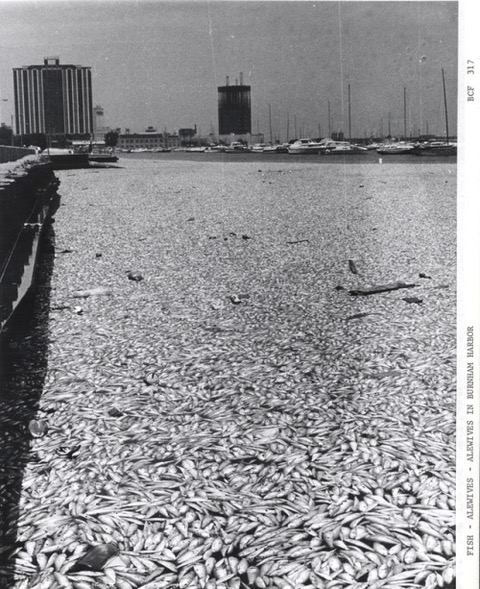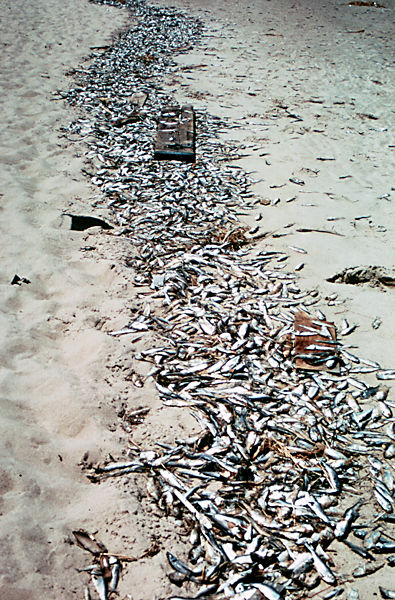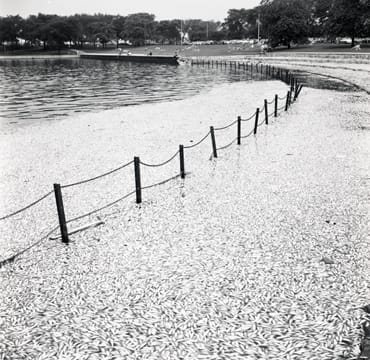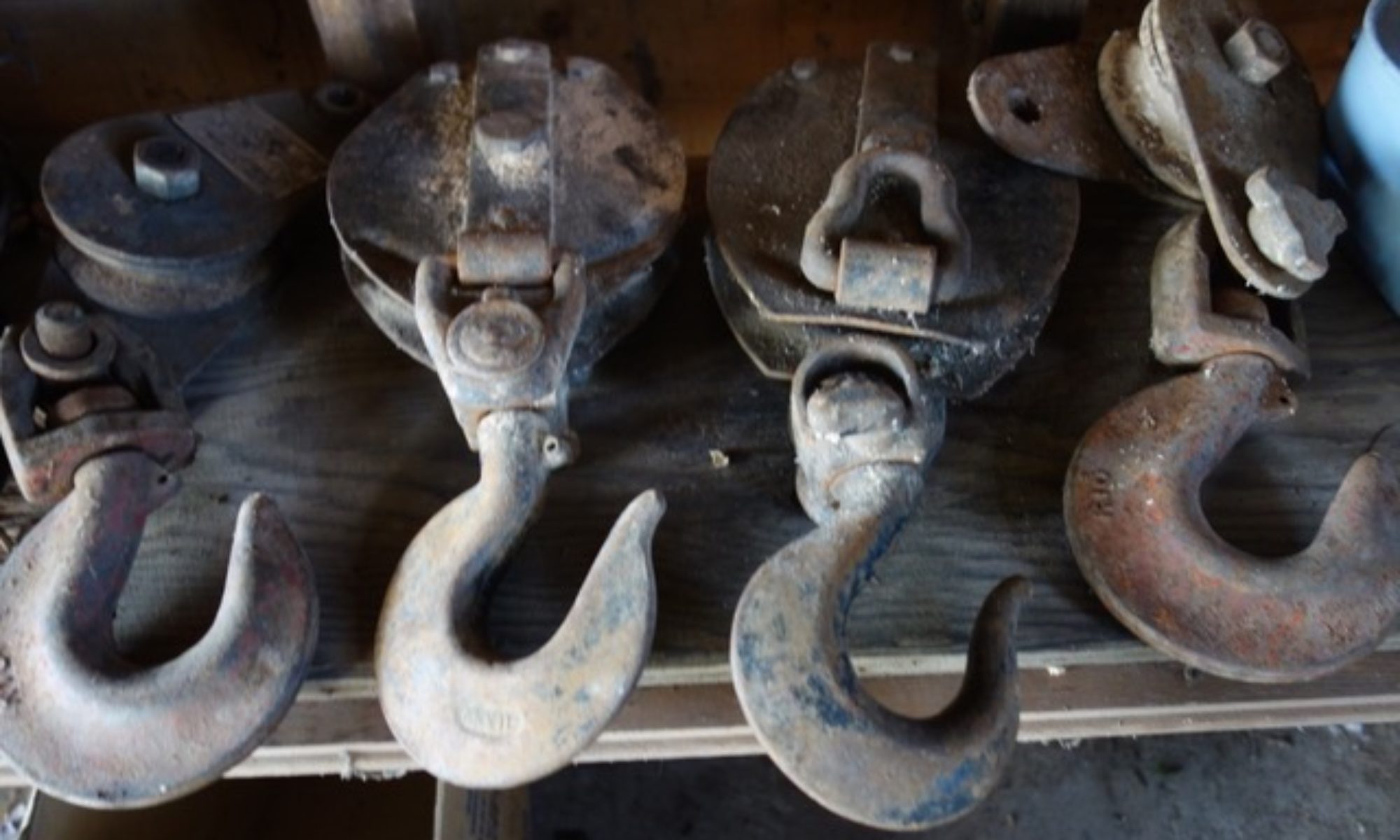EPISODE 307 THE ALEWIFE POPULATION EXPLOSION: millions of dead, multiple millions living in the Great Lakes 1967
alan skeoch
April 2021
HOW DID THE ALEWIFE GET ITS NAME?
Alewives have a peculiar shape. The front part of the fish is enlarged…bigger than the bottom part. Apparently the name
alewife referred to the imaginary wives of saloon keepers whose wives were supposedly Buxom. Today that definition
would be considered sexist and unacceptable.
Howard Tanner was a passenger in a small plane flying over Lake Michigan when he noticed
something strange in the water below. It was a great white streak on top of the normally blue
water … several miles long and half a mile wide.
“What’s that streak?”
“Dead fish, millions of them.” responded the pilot
“Circle snd go lower so I can get a better look.””
Sure enough there were millions of little fish floating dead in
the middle of Lake Michigan. Howard knew what they were.
“Alewives.”
Keep the name Howard Tanner in mind. He eventually changed to whole ecology of the Great Lakesl
…”I will either be a hero or a bum,” he commented. You ve the judge in subsequent Episodes.
THE 1967 DIE OFF IN LAKE MICHIGAN
THE ALEWIFE EXPLOSION: REPORT BY THE (U.S.) FEDERAL WATER POLLUTION CENTRAL ADMINISTRATION, JULY 25, 1967
FISH populations in the Great Lakes had declined but the decline was worsened dramatically in
“ THE 1945-49 period when the lake trout declined sharply. Subsequent species changes took place in
swift succession and by 1965 the catch was dominated by the alewife which invaded the lake (Michigan) where it was first
recorded in 1949; exotic species constituted nearly 63% of the catch and the portion of the catch composed of Lake Trout,
lake herring, suckers and whitefish which exceeded 82% in the 1898-1909 period, was only 4.5% in 1965.”
“There is no question, however, that predation of the sea lamprey triggered the decline of the lake trout in the upper three
great lakes…and a population explosion of he alewife were major contributing factors..”
THE ALEWIFE STORY
These changes in the fish populations of the Great Lakes occurred in a remarkably short period of time. The sea lampreys
sucked the blood out of huge numbers off lake trout. Lake trout relied heavily on alewives for food and doing so
kept the alewife population in check. Once the lake trout population declined suddenly there was an equal and opposite
reaction by the alewives. By the 1960’s it was estimated that 90% of the biomass in the Great Lakes was alewives.
Not thousands…not millions…but billions of alewives.
Alewives are bottom feeders. Lake trout lay their eggs on the bottom of the Great Lakes which when they hatched provided
a food bonanza for the alewives. The victims of these two creatures…the sea lamprey and the alewife…were the Lake Trout.
Suddenly the Great Lakes fishery got out of balance. Lake Trout (and other Great Lakes fish) dropped from 82% in 1898-1909
to 4.5% in 1965. An amazing change done with great speed.
In 1873 the first alewife was detected in Lake Ontario. How did it get there? Normally an Atlantic fish that lived its life in
salt water but spawned in the rivers and ponds and even drainage ditches of the east coast. Some may have ventured up
he St. Lawrence waterway. But alewives may also have been present in Lake Ontario and Lake Champlain for ages.
And not a problem. Lots of natural fish liked eating alewives. a fact that kept the population in balance. Lobster fishermen
use alewives as bait.
As long as there was a healthy lake trout population then the alewives were no problem. Lake trout liked to eat alewives
as did other prey fish. However when the lake trout began to disappear due to sea Lamprey predation there was
less and less check on the alewives of the Great Lakes. A population explosion followed that overwhelmed the Great
Lake fish populations. So many alewives that they became 90% of the biomass of the Great Lakes by the 1960’s.
A number that high is hard to believe but true.
IT was the millions of dead alewives that alerted Canadians and Americans to the fact that untold millions of live alewife
had taken control of the Great Lakes. The alewife takeover was not ‘about to happen’ nor was it ‘happening’. It had happened.
The Great Lakes fish bowl was full to overflowing with alewives. Remember this figure…90% of the biomass of the Great Lakes
in 1967 was alewives. Incredible. Devastating. Perhaps insoluble..
The huge carpets of floating dead and dying alewives noticed by Howard Tanner was repeated elsewhere in the Great Lakes
I was a teen ager in 1953 when I noticed carpets of dead alewives on Sunnyside Beach in Toronto. Nothing like what
Tanner noticed but striking … and revolting …all the same. These huge carpets of dead alewives were explained as
having been killed by sudden water temperature change. Which may have been true. Another explanation was that the
alewife deaths were natural. Millions just reached maturing and died. The Great Lakes had become a fish bowl almost
exclusively alewife.
The alewife dead on Toronto beaches in the 1950’s and 1960’s looked much like this photograph. In Chicago in 1967 the
dead alewives piled up in millions…carcasses rated…millions and millions of flies feasted…and the smell was so bad that beaches
were abandoned while bulldozers and trucks moved as many as 60 tons of red alewives to disposal sites where they were buried.
Below are some excerpts from local Chicago newspapers and individuals. One local said that a floating strip of dead alewives
in Lake Michigan was estimated as 40 miles long. Surely an exagerration!
CHICAGO….DEAD ALEWIVES NIGHTMARE
WHAT WAS HAPPENING?
Why did the alewife population explode?
1) Overfishing for a century. Fish population was not infinite but was treated as if infinite.
2) Sea Lamprey population explosion peaked 1960…lake
trout biggest victims
3) Alewife population explosion…lake trout biggest victims
for two reasons. 1) Alewives feasted on lake trout fry which
were born in the great lakes rather than the feeder rivers.
ii) Lake trout diet of alewives triggered thiamin deficiency in
lake trout where the fry became sterile. Attributed to the absence
of thiamin in the alewives.
COMMENTS BY NEWSPAPERS AND CITIZENS IN CHICAGO IN 1967
June 19, 1967 – The beaches at Montrose, Rainbow, North Avenue, Ohio Street and Oak Street are flooded with dead alewives in what a park district official calls the worst plague of the fish that he has seen in his career. Park district crews use bulldozers and high-lift trucks to remove the fish, but they keep washing up on the beaches faster than they can be carted away. Joseph Krzesinski, the director of landscape maintenance for the park district, says, “They keep coming in. In some places they are a foot deep. Look out over the lake there they are as far as the eye can see.” [Chicago Tribune, June 20, 1967].The invasion was first noted on June 15 when an official of the Great Lakes Region of the Federal Water Pollution Control Administration spotted streaks of the dead fish being blown toward the Michigan shore. Between June 17 and 18 the wind shifted, blowing from east to west, and by June 19 “Chicago’s shoreline was clogged with a silvery carpet of alewife carcasses.” [nepis.epa.gov]. Alewives, originally inhabitants of the North Atlantic, were first seen in Lake Ontario in the 1880’s and gradually moved through the Great Lakes over the years. Marine biologists suggest that a combination of factors has led to the plague of dead alewives in Lake Michigan. Over-fishing in the Great Lakes in the early part of the century, along with the explosion of the sea lamprey, an invasive species, resulted in the demise of the lake trout, the only natural threat to the alewife. When the 1960’s arrived, it was estimated that alewives made up 90 percent of Lake Michigan’s biomass. Schools as large as 40,000 fish moved close to shore in late spring to spawn, with a female alewife carrying between 10,000 to 12,000 eggs. After spawning a mass die-off of the fish would occur, which was especially pronounced in 1967, biologists theorize, because of extreme fluctuations in the temperature of Lake Michigan. After 1967 the government began stocking the lake with Chinook salmon, “the most voracious fish in the lake”. [Chicago Tribune, January 22, 2006]. The salmon feed at the same water level as alewives and have kept the alewife population in check. The above photo shows the lake shore at Diversey Harbor during the invasion.

The old adage, “an east wind is neither good for man nor beast,” was especially relevant for Wilmette in the summer of 1967. That was the year that a particularly heavy die-off of alewives washed up on the beaches. The prevailing east winds pushed the decaying bodies of these small, silvery fish ashore in droves. By July, the Wilmette Park District was hauling six or seven truck loads of alewives out to a landfill in Des Plaines every single day. Next door at Winnetka’s beach, the dead fish were piled up one foot deep and ten feet wide, while Highland Park hauled sixty tons of dead fish away in just two days. Accompanying the sharp smell of decay was an influx of flies and mosquitoes. All in all, not a great beach year for Wilmette. Beach attendance was already hitting record lows– down almost sixty-five percent from its high in 1960– before the alewives arrived. Then things got even worse.
It’s summer. We’re all enjoying the great outdoors, and some of us are going to the beach. Back in the 1960s, when people around Chicago went to the beach, they had to deal with alewives.
An alewife is a kind of herring. It’s about 7 inches long and weighs a few ounces. You mostly find them off New England. In the Boston suburbs, one of the major streets is even called Alewife Parkway.
Well, during the 1930s, these alewives got into Lake Michigan. They weren’t much of a problem because the bigger fish–like the trout–would eat them. But the sea lamprey came along and ate the trout. Sea lampreys didn’t eat alewives, so suddenly, the lake had all these alewives and no predators.
Pretty soon there are alewives filling the lake. That’s what today’s story is about—July 7, 1967. There are so many alewives around Chicago that it’s become national news. Even Time magazine is talking about it.
Each year, we’d have the annual Alewife Die-Off. All these alewives would die in Lake Michigan, and their bodies would drift in. They’d fill the water near the shore or wash up onto the beach.
Of course, those alewives would be decaying, and you can imagine the smell—well, you probably don’t want to. The flies would come in, and the beaches would be a mess. The city would have to use tractors and bulldozers to clear off the beaches.
Nobody knew how many dead alewives there were. Experts said hundreds of millions, maybe a billion. A guy in a plane over the lake saw a ribbon of drifting dead alewives 40 miles long.
POSTSCRIPT: REVIEW LIFE AND DEATH IN THE GREATEST FISH BOWL ON EARTH: THE GREAT LAKES
TROUBLES: 1) OVERFISHING 2) SEA LAMPREYS 3) ALEWIVES 4) NEXT:…EPISODE 308 HOWARD TANNER …COHO AND CHINOOK SALMON








